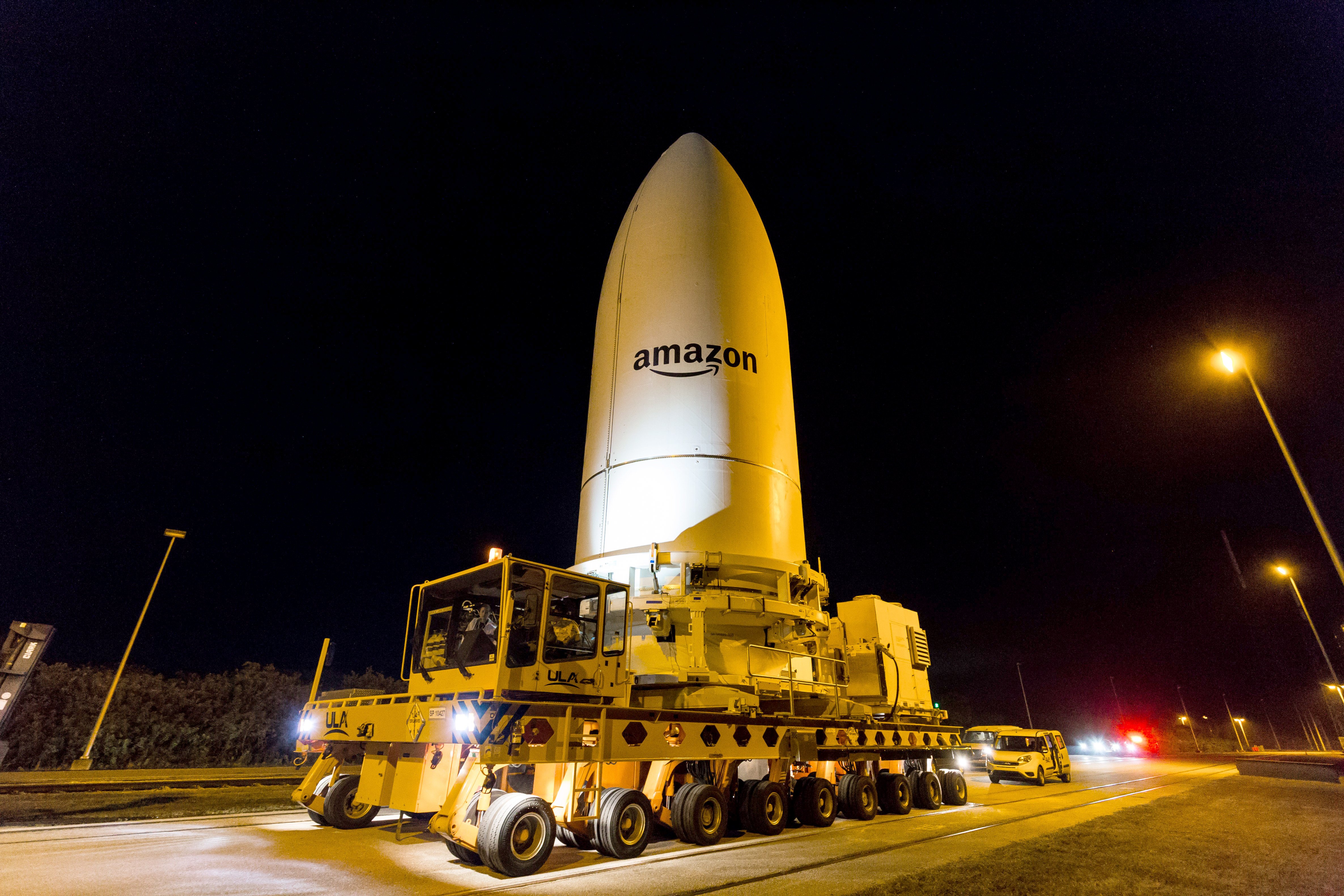
United Launch Alliance (ULA) is readying the formidable Atlas V 551 rocket to deliver the first satellites into space for Amazon’s Project Kuiper, an advanced low Earth orbit (LEO) constellation that will bring fast, reliable internet to customers and communities around the world.
Liftoff of the Kuiper 1 mission will occur from Space Launch Complex (SLC)-41 at Cape Canaveral Space Force Station, Florida, on Wednesday, April 9. A three-hour launch window opens at 6 p.m. EDT (2200 UTC).
 This launch begins a new chapter in the commercial launch industry as Amazon partners with ULA to deliver a majority of its satellites into orbit. The Kuiper 1 mission is the first of 46 launches by ULA for the Kuiper constellation using eight Atlas V and 38 Vulcan rockets.
This launch begins a new chapter in the commercial launch industry as Amazon partners with ULA to deliver a majority of its satellites into orbit. The Kuiper 1 mission is the first of 46 launches by ULA for the Kuiper constellation using eight Atlas V and 38 Vulcan rockets.
Project Kuiper is built around an initial constellation of more than 3,200 advanced LEO satellites. Its mission is to provide fast, affordable internet to customers and communities around the world, including those unserved or underserved by traditional connectivity technologies. The system has the capacity, performance, and flexibility to serve a wide range of customers, from individual households to schools, hospitals, businesses, government agencies and other organizations operating in places without reliable connectivity.
ULA began preparations for the Kuiper 1 launch on Feb. 24 by standing up the Atlas V first stage aboard the mobile launch platform (MLP) at the Vertical Integration Facility (VIF), located adjacent to the SLC-41 pad. The subsequent days saw the full complement of five side-mounted solid rocket boosters (SRBs) affixed to Atlas to provide maximum launch performance.
The Centaur upper stage, which will carry the payload into the prescribed orbit, was lifted into the VIF on March 14. Kuiper 1 marks the 250th Centaur launch atop an Atlas rocket and the 275th flight overall for the venerable upper stage.
 Centaur has successfully launched spacecraft to every planet in the solar system, delivered dozens of other scientific and weather satellites, carried critical assets into space for U.S. national security, and enabled commercial missions including support of NASA’s Commercial Crew Program.
Centaur has successfully launched spacecraft to every planet in the solar system, delivered dozens of other scientific and weather satellites, carried critical assets into space for U.S. national security, and enabled commercial missions including support of NASA’s Commercial Crew Program.
While the rocket stacking activities were ongoing, Amazon technicians were installing the satellites onto a specialized dispenser system inside Project Kuiper’s satellite processing facility at the Kennedy Space Center. Once the craft were all set in place, the Atlas V's composite payload fairing enclosed Kuiper 1 for its historic journey.
On March 31, ULA transported Kuiper 1 from the satellite processing facility to the VIF where it became one of the heaviest payloads ever hoisted atop an Atlas rocket. The payload is supported through attachment and reinforcement elements for the ride to orbit.

ULA made several modifications and design changes to accommodate the mass and size of the Kuiper payloads. That included enhancements to the ground handling equipment needed to transport the encapsulated payload during the move from Amazon's building to ULA's VIF and the hardware used to hoist the payload atop the Atlas V for connection.
Now standing 205 feet (62.5 m) tall, the fully assembled Atlas V rocket features a longer length payload fairing than standard to carry as many satellites as possible. This will be only the 9th time in 102 launches of Atlas V to use the larger fairing.
The Atlas V 551, weighing 1.3 million pounds (589,000 kg) once fueled for launch, generates a combined thrust of 2.7 million pounds (12 megaNewtons) from its main engine and five SRBs. The rocket will embark on a northeasterly trajectory and onboard guidance will target a near-circular LEO of approximately 280 miles (450 km) and 51.9 degrees inclination.
Learn more about the Atlas V Kuiper 1 launch
See our Kuiper 1 photo album

 Back To Blog List
Back To Blog List



